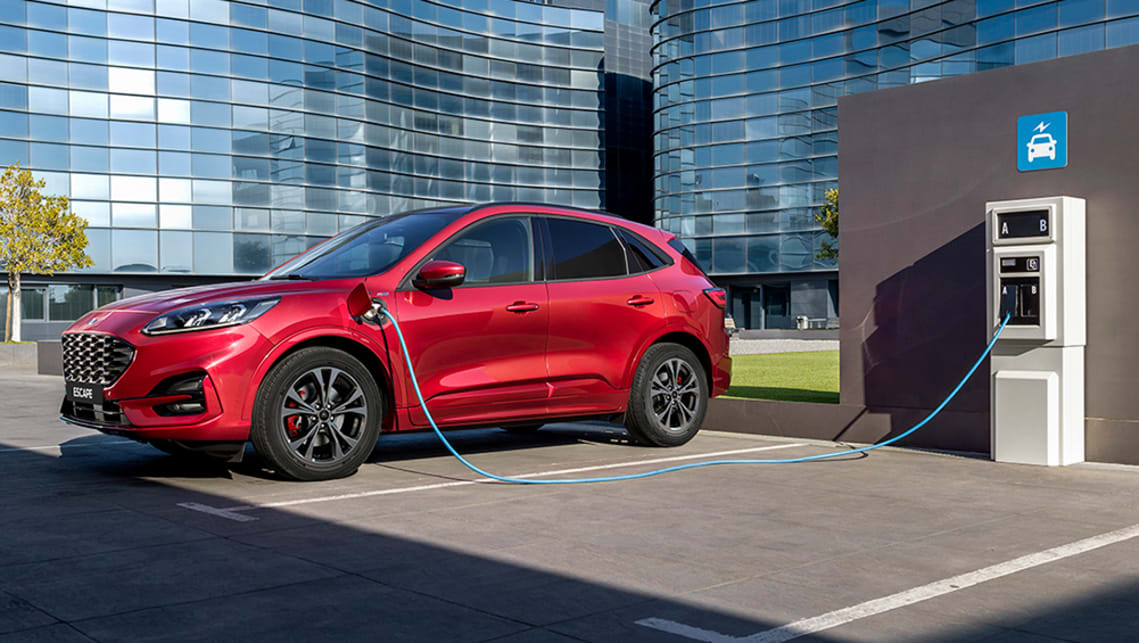Your cart is currently empty!

The battle of the new hybrid SUVs 2020: How does the Ford Escape compare to the Toyota RAV4 and Mitsubishi Outlander?
So, you’re now in the market for a family-friendly (and affordable) SUV, but you’re also environmentally conscious, so what options do you have?
Well, the good news is there will soon be three mid-sizers to consider. Indeed, buyers like yourself have more choice than ever before.
We, of course, are alluding to the all-new Ford Escape PHEV due in showrooms in the third quarter of this year, and its rivals, the Toyota RAV4 Hybrid and Mitsubishi Outlander PHEV.
And don’t make the mistake of thinking the latter two are already past their used-by date, as both were significantly updated within the past nine months.
But which one is the best option for you? Let’s take a look at the fuel-efficient trio in detail.
Powertrain details
As its name suggests, the Escape PHEV is a plug-in hybrid. It mates a 2.5-litre naturally aspirated four-cylinder engine (running on the Atkinson cycle) with an electric motor for a combined peak power of 167kW, while maximum system torque is unquoted. Both power sources drive the front wheels only.
Conversely, the RAV4 Hybrid has a ‘self-charging’ set-up, which features a 131kW/221Nm 2.5-litre naturally aspirated four-cylinder engine (running on the Atkinson cycle). Front-wheel-drive versions have a single 88kW/202Nm electric motor, while their all-wheel-drive counterparts add a second, 40kW/121Nm unit. Combined peak power is 160kW and 163kW respectively, and maximum system torque is unquoted for both.
Just like its rival from Ford, the Outlander PHEV is a plug-in hybrid, albeit AWD only. It combines a 94kW/199Nm 2.4-litre naturally aspirated four-cylinder engine (running on the Atkinson cycle below 3000rpm and Otto cycle above 3000rpm) with two electric motors outputting 60kW/137Nm and 70kW/195Nm at the front and rear respectively. That said, combined peak power is just 94kW, while maximum system torque is unquoted.
All three models are exclusively mated to a continuously variable automatic transmission (CVT).

Claimed fuel consumption
Ford claims the Escape PHEV drinks 1.5 litres per 100 kilometres on the combined cycle test (ADR 81/02), although our real-world experience with other plug-in hybrids indicates that will probably be a hard mark to meet. That said, excellent fuel economy can still be expected with the right approach (i.e. frequently recharging the battery).
According to Mitsubishi’s claim, the Outlander PHEV is slightly thirstier, at 1.9L/100km. But again, that’s an exceptional result – but one many will struggle to replicate on their daily commute.
And it’s for that reason the RAV4 Hybrid will likely give you the most consistent real-world fuel efficiency. When Toyota claims 4.7L/100km (FWD) and 4.8L/100km (AWD), it means it.
Electric-only driving range
When its electric-only drive mode is selected, the Escape PHEV has a driving range of more than 50km between charges. A firm number is yet to be claimed, and the testing standard used is unknown.
Conversely, the Outlander PHEV’s claimed driving range is 54km (NEDC), so you’re presumably splitting hairs between the two plug-in hybrids here, both of which excel within the city limits.
And while the RAV4 Hybrid is capable of driving silently over shorter distances and at lower speeds, it doesn’t have a claimed range, such is the nature of a self-charging hybrid.

Charging options
At the time of writing, Ford is yet to detail charging options for the Escape PHEV’s 14.4kWh lithium-ion battery, although we do know it can be topped up on the move via regenerative braking, albeit slightly.
Speaking of which, regenerative braking is the only way in which the RAV4 Hybrid’s 1.6kWh nickel-metal-hydride battery is recharged. As such, Toyota doesn’t quote charging times.
The Outlander PHEV has a 13.8kWh lithium-ion battery, which Mitsubishi claims can be recharged from zero to 100 per cent in about seven hours when using a domestic power socket. A Type 2 AC charger reduces the time to three hours, while a DC fast charger lowers it to 25 minutes. It also gets topped up on the go via regenerative braking.
Pricing and specification
The Escape PHEV is only offered in a single, mid-range specification, dubbed ST-Line. It is priced from $52,940 plus on-road costs and subsequently comes loaded with standard equipment, some of which add a sporty touch.
Going two steps further is the Outlander PHEV, which can be had in entry-level ES ($47,390) and ES ADAS ($48,390) forms, and flagship Exceed ($56,390) guises. Standard equipment therefore ranges from variant to variant.
It is, however, the RAV4 Hybrid that has the most comprehensive (and affordable) line-up, with no less than six versions available. Three grades are on offer: entry-level GX ($35,490), mid-range GXL ($38,490) and flagship Cruiser ($41,990), all of which can be upgraded from FWD to AWD for $3000. Again, standard equipment ranges from variant to variant.
Full specification breakdowns for all three models can be found in the links scattered throughout this article.
by
Tags:
